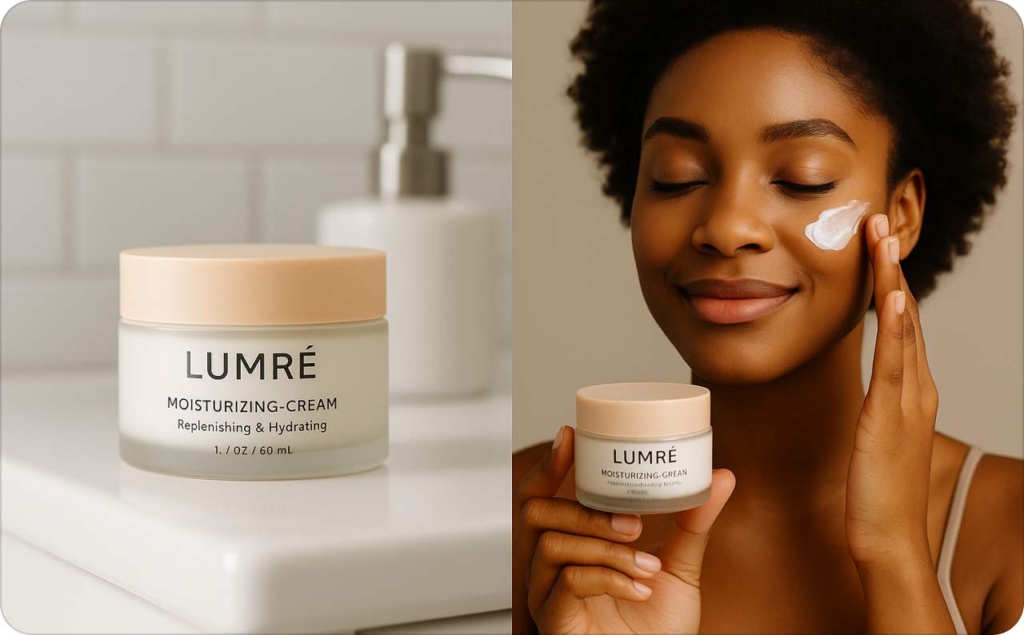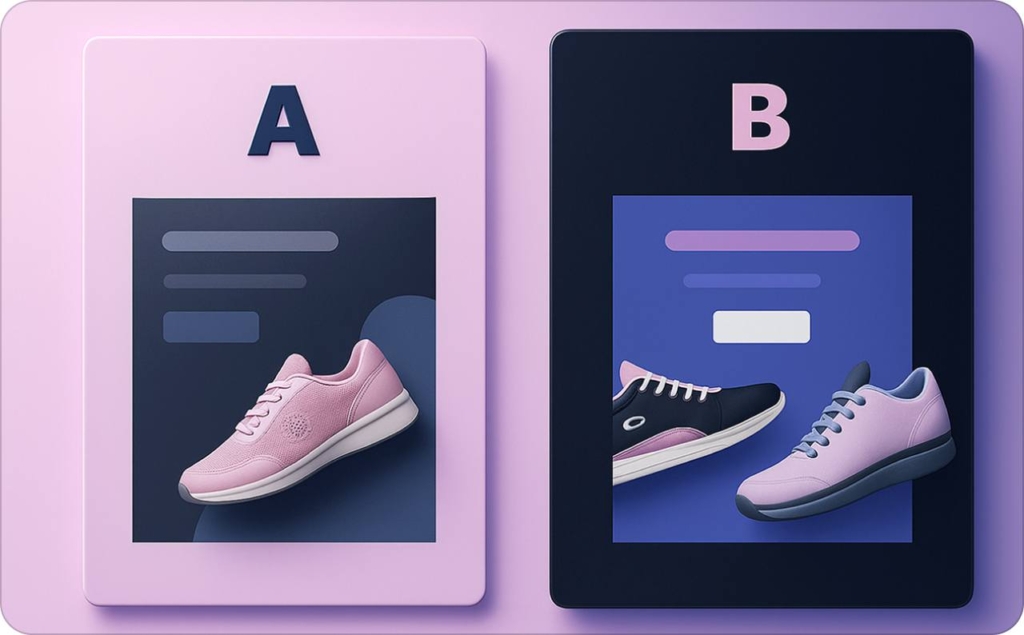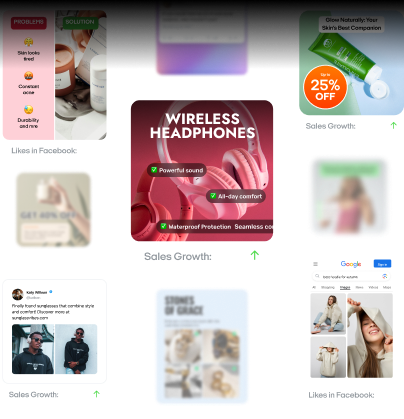Social media advertising explained for small business owners
Feeling overwhelmed by online ads? Zeely AI simplifies social media advertising for small business owners — explaining how it works and how to use it for steady, affordable growth.
Running paid ads on Facebook, Instagram, LinkedIn, YouTube, or TikTok without a clear system drains your budget fast. Without tight alignment between your target audience, ad creative, budget, and performance metrics, return is unpredictable, and scaling becomes guesswork.
Ad spending in the U.S. social media advertising market is expected to reach $95.70 billion in 2025. That volume reflects that the brands that win are running smarter, faster, and with more clarity. If you want to learn about what social media advertising is and how to choose the right platform, keep reading the article.
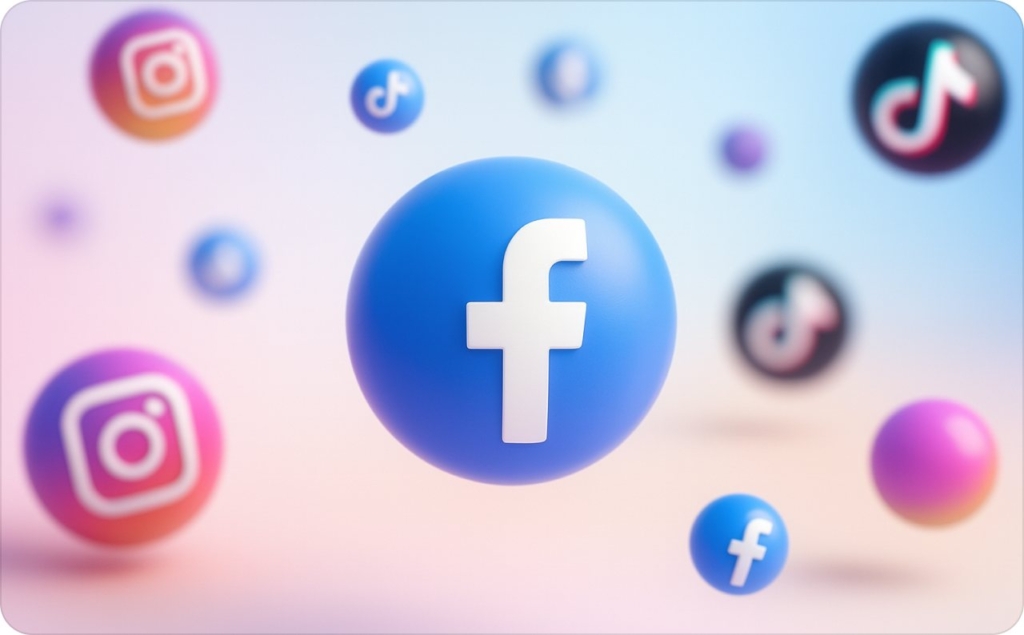
What is social media advertising?
Social media advertising is a digital marketing strategy where businesses pay to display ads on platforms like Facebook, Instagram, TikTok, LinkedIn, and YouTube. These ads appear directly in user feeds, stories, and video content, blending seamlessly with the content people are already consuming.
What sets social media advertising apart is its targeting power. Instead of broadcasting messages to a broad audience, you can focus on users by location, interests, online behavior, or even your existing customer lists.
This precision helps brands of any size reach the right people at the right time, often with a smaller budget than traditional channels.
Why social media advertising helps your business grow
Paid social media advertising helps your business grow by reaching more people, driving better results, and giving you more control over your budget.
Unlike organic content, which depends on algorithms and timing, social ads let you decide who sees your message and when. Whether your goal is to bring in new customers, promote a product, or increase brand awareness, paid social gives you the tools to make it happen—with less guesswork and more results.
Reach the right people without wasting money
One of the biggest benefits of paid social is that you’re not just reaching more people—you’re reaching the right ones.
With built-in targeting tools, platforms like Facebook, Instagram, and LinkedIn let you choose exactly who sees your ads. You can filter by age, location, interests, job titles, and more. This means your content shows up in the feeds of people who are more likely to care about your product or service.
Instead of spending your budget on broad audiences, you’re connecting with people who are more likely to engage, click, and convert. That kind of focus helps your ad dollars go further—and brings in better results.
You only pay for what works
Social media advertising also gives you clear performance data. As soon as your campaign starts, you can track how it’s doing—how many people clicked, how much each click costs, and how many sales or sign-ups came from it.
You also have the flexibility to make changes while the ad is live. If something’s not working, you can pause the campaign, try a new image or message, or adjust your audience.
You decide how you want to pay:
- CPC (cost per click) is great if your goal is traffic or lead generation
- CPM (cost per thousand views) works well if you’re building brand awareness
No matter your goal, you’re paying for real outcomes—not just impressions. That means your budget stays focused, your performance stays visible, and your results stay measurable.
Launch Fast and See Results the Same Day
Social media advertising doesn’t require long planning cycles. You can launch a campaign in just a few steps—and start seeing results within hours.
All you need to do is:
- Write your ad copy
- Choose your audience
- Set your budget
- Hit publish
Whether you’re promoting a new product, running a limited-time offer, or reacting to a trending topic, this kind of speed helps you stay in control and act when it matters most.
Once your campaign is live, performance data starts rolling in right away. You’ll see early signals like reach, clicks, and engagement. If something isn’t working, you don’t have to wait—you can make updates the same day.
Many platforms also offer smart tools that adjust your ad automatically based on how it’s performing. That means you can optimize in real time and stay focused on what’s working.
The best social media platform for your business in 2025
Choosing the right platform shapes how your campaigns perform. Each offers distinct ad formats, targeting options, and audience behaviors. Understanding these differences helps you direct your budget where it drives the most results.
Facebook ads
Facebook continues to dominate paid social advertising with wide reach, flexible creative options, and detailed audience segmentation.
You can use Zeely AI Facebook ad maker to create image ads for quick, clear messages or video ads to showcase product stories. Carousel ads allow you to highlight multiple features or SKUs. Collection ads pair visuals with product listings inside a mobile-first layout.
Audience tools give you control. Use Custom Audiences to re-engage visitors or email subscribers. Build Lookalike Audiences to expand reach with users similar to your best customers.
Interest-based targeting lets you filter by lifestyle, behaviors, or hobbies. For example, a local business can retarget recent website visitors and offer a time-limited discount to bring them back.
Meta’s Dynamic Creative Optimization runs tests in the background. It delivers the best combination of visuals, headlines, and calls to action based on performance. This way, e-commerce brands benefit from retargeting and personalization. Local businesses see more foot traffic when using precise filters.
Video and Collection ads often outperform others in conversion rates. To get stronger returns, rely on Custom and Lookalike Audiences, monitor your CPC and CPM, and adjust based on results.
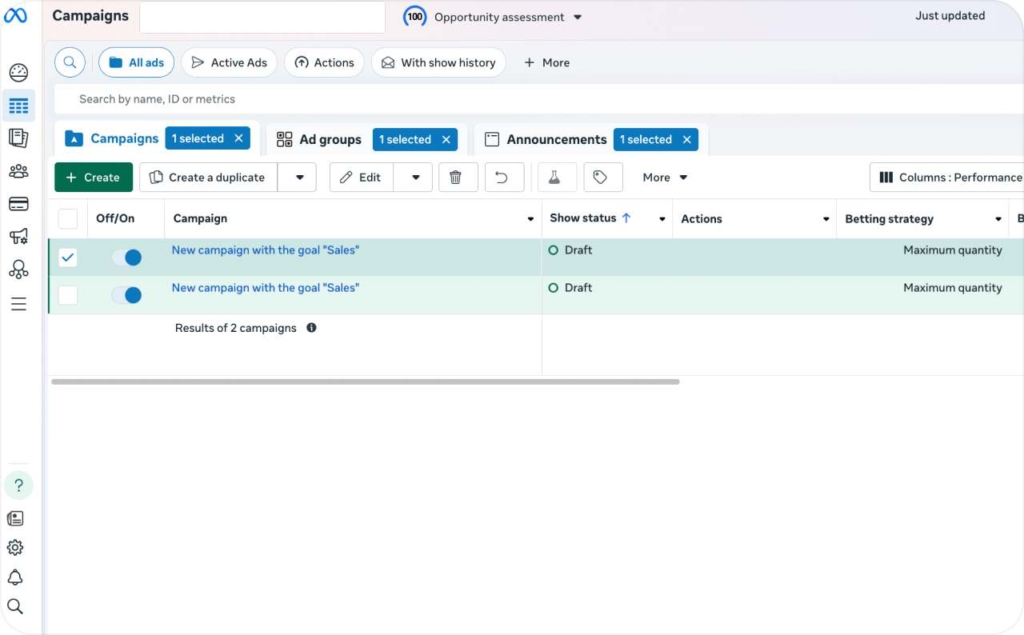
Photo source: Meta Campaigns
Instagram ads
Instagram prioritizes visual quality and momentum. Its ad formats are designed to attract attention and stop scrolling.
Stories ads appear between organic content and fill the screen. Instagram reels ads match the flow of the Reels feed with music, edits, and trends. Feed ads fit naturally into a user’s scrolling experience. This makes it easy for lifestyle brands to connect with younger audiences and drive interaction with quick tutorials on how to create Instagram reels.
Visual quality shapes outcomes. Use vertical formats, leave space for interface elements, and add interactivity where possible. For Reels, match the style of native content — fast edits, trending sounds, and direct visuals.
Influencers multiply reach. Collaborate with aligned creators. Turn their best posts into boosted paid ads. These maintain an authentic tone and carry stronger engagement through comments and shares. You can also create high-performing reels n seconds with our AI-powered Instagram reels maker.
Reels tend to drive the highest engagement rate. Influencer-led content becomes more believable and extends credibility. Prioritize creative that reflects audience taste and format dynamics.
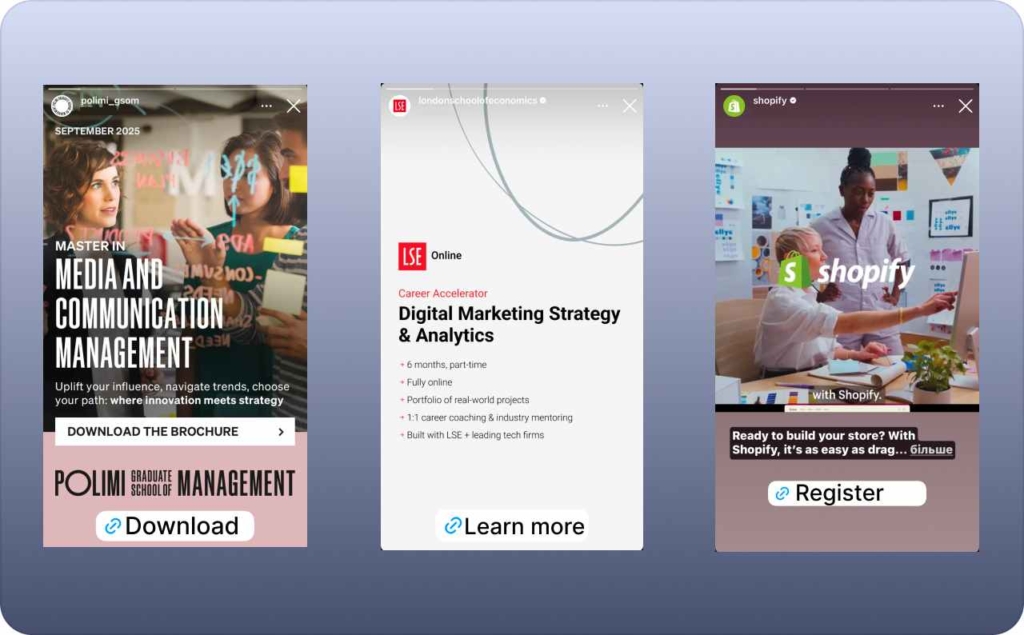
Photo source: Instagram story ads (@polimi_gsom, @londonschoolofeconomics, @shopify)
YouTube ads
YouTube puts your message in front of users actively consuming video content. This gives more space for storytelling, education, or quick action.
Use In-Stream ads before or during other videos to drive direct responses or brand impressions. Shorts ads appear in short-form feeds and work well for quick product introductions. You can create an engaging Youtube short ads within minutes with AI! Discovery ads show up in search and watch suggestions, ideal for drawing clicks to tutorials or explainers.
Clear creatives win attention. In In-Stream ads, open strong in the first seconds. In Shorts, lean into rhythm and visual cues. Add simple CTAs and clean up your visuals for mobile view. Make YouTube video ads in minutes with AI YouTube video ad maker, just drop in your idea and let AI bring it to life. No editing stress, just results.
Google Signals provides connected behavior data. Enable it in Google Analytics 4, then link it with your Google ads account. This syncs activity across devices. You can retarget someone who saw a video on mobile and searched your product later on desktop.
Use In-Stream ads for deeper stories, Shorts for attention bursts, and Discovery ads to appear beside related searches. Match your video to intent and platform behavior for better delivery.
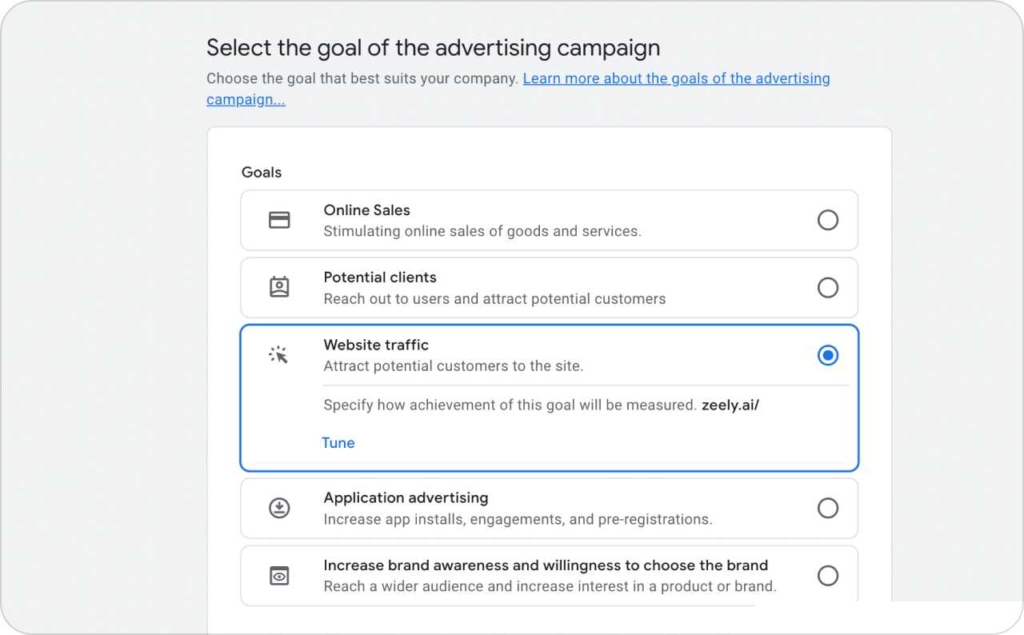
Photo source: Google Ads
LinkedIn ads
LinkedIn serves B2B campaigns where lead quality and job relevance matter more than volume.
Sponsored Content appears in feeds with single images, videos, or documents. Use it to deliver industry content or highlight offers. Sponsored InMail reaches inboxes with direct invitations or resources. Lead Gen Forms capture contact details without making users leave the platform.
As an example, a SaaS company targeting operations managers can combine a product whitepaper with a Lead Gen Form, lowering friction and improving completion rates.
Target by job title, company size, industry, seniority, and skills. ads reach people in specific roles with high buying influence. Use LinkedIn Campaign Manager to track cost-per-lead, engagement, and conversion rates.
While the cost per mile is higher than most platforms, the contact quality compensates. Conversion paths shorten, and customer lifetime value improves through qualified entry points.
Use formats that match intent. Show value upfront. Align messaging with job-specific problems. Focus on form simplicity and offer clarity.
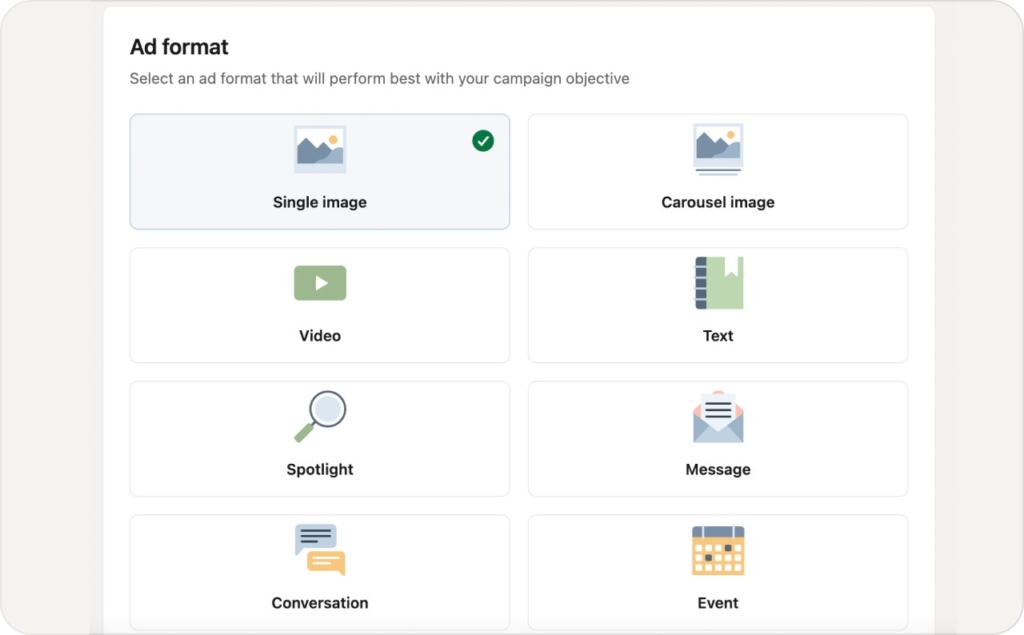
Photo source: LinkedIn Ads
TikTok ads
TikTok rewards quick stories and cultural relevance. It’s a strong fit for Gen Z, Millennials, and trend-reactive brands. You can build pro-level ads in minutes with TikTok ad creator — no experience needed, just your idea and a few clicks.
TopView ads appear as soon as the app opens. Spark ads boost organic posts, adding scale to content already resonating. In-Feed ads slide between user videos without breaking the flow.
A beauty brand can turn a customer-created tutorial into a Spark Ad, placing it directly into the feed of similar users. It looks natural and performs like native content.
Trending sounds, hashtags, and visuals push engagement. Use TikTok Creator Marketplace to find influencers who understand the platform. Their content often outperforms brand posts in tone and reach. Find more on how to create effective TikTok ads that will increase audience and promote your brand.
Short videos work best when they show the product in use quickly. Keep editing tight and visuals bold. Hashtag challenges also drive user participation, multiplying organic impressions while supporting paid distribution.
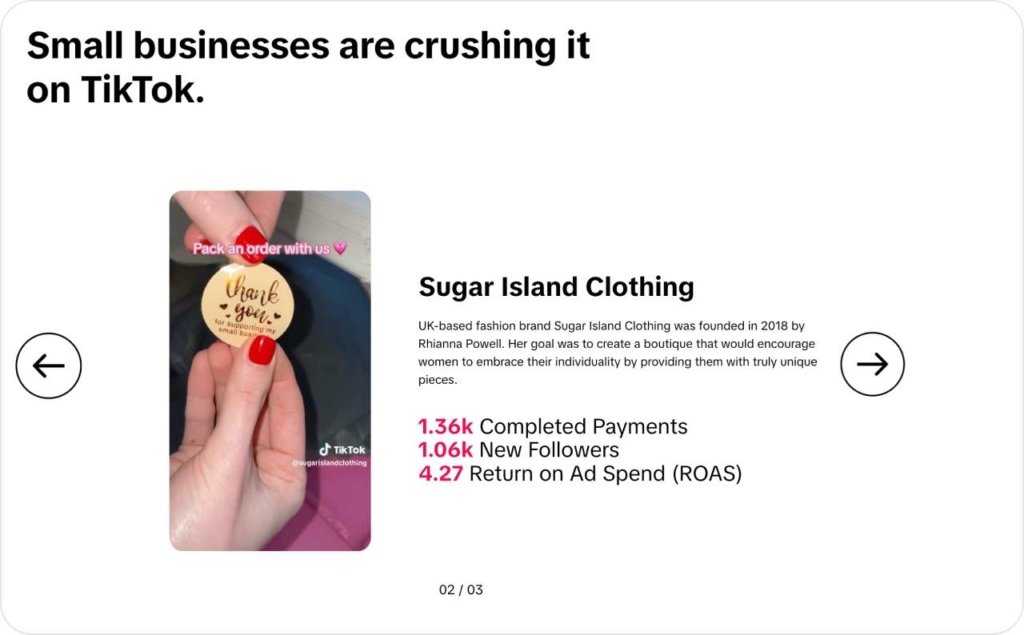
Photo source: TikTok Ads Manager
X ads
X focuses on real-time attention. It works well for news, finance, and fast-moving discussions.
Promoted Posts look like tweets and appear in timelines. Use them to join live conversations or share thought leadership. Amplify Sponsorships align your ad with premium video content from media partners.
Let’s say a brand tracking stock trends can reach users tweeting about finance by surfacing relevant ads mid-discussion. Timing and topic relevance shape performance.
Targeting is immediate. Select audiences based on keywords, hashtags, or interests tied to live events. This lets your message show up while a conversation is still gaining traction.
X’s audience behavior favors urgency. Users want fast updates and react quickly to events. ads that feel timely — whether product launches or opinions — gain traction faster than slow-drip content.
Metrics like engagement rate and site traffic provide visibility into performance. CPM is often lower than other platforms, especially during trending moments. Quick, creative and fast deployment lets you take advantage of viral momentum before it fades.
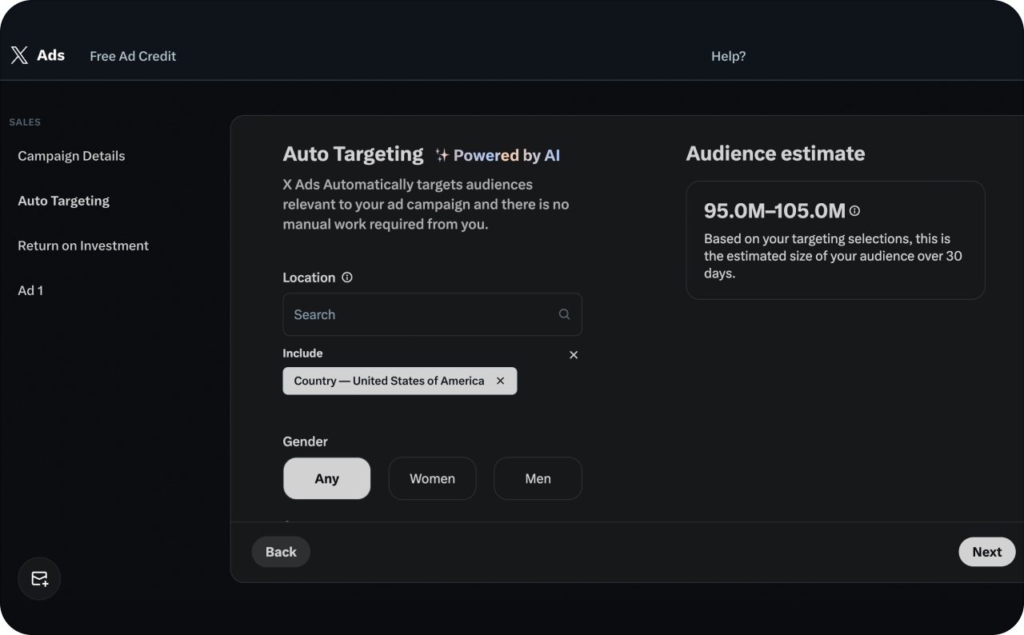
Photo source: X Business
Key Social Media Advertising Strategies
Social media advertising isn’t just about posting ads and hoping for clicks. It’s a sophisticated ecosystem of strategies that need to work in harmony—from precise audience targeting to creative optimization, from funnel structuring to leveraging advanced semantic insights. The brands that succeed don’t rely on guesswork; they build cohesive, data-driven campaigns aligned with their business goals, maximizing ROI while adapting quickly to platform changes.
Let’s break down the key strategies that power high-performing paid social campaigns today.
Reach the right people with your social media ads
When you post an ad online, you don’t want just anyone to see it—you want the right people to see it. That’s what audience targeting is all about.
If you show your ad to people who don’t care about what you’re offering, they’ll scroll right past it. But if you show it to people who actually need or want your product, they’re more likely to click, buy, or follow you.
Let’s break down how to find and reach the right audience — step by step.
1. Know who you’re talking to
Imagine you’re trying to sell something in a huge stadium filled with thousands of people. If you just start yelling into a megaphone, hoping someone listens, most of them will ignore you. But if you walk up to a small group and say, “Hey, I know you’re into sneakers—check this out,” suddenly you’ve got their attention.
That’s what defining your audience is like. Before you run any ad, you need to know who you’re actually trying to reach. This step is called creating a persona—a made-up but realistic profile that represents your ideal customer.
For example, let’s say you run a small online store that sells custom phone cases. You could start with something like this:
Our main customer is probably a teenage girl, around 15 or 16 years old, who loves customizing her phone and spends a lot of time on Instagram and TikTok. She’s into fashion, likes pastel colors, and follows influencers who share phone accessories.
Once you know who this person is, you can start building an ad that speaks directly to her—just like you would in real life.
2. Break your audience Into groups
Not every customer is the same, even if they all follow your brand. That’s why marketers segment their audience. In simple terms, that means they split their audience into smaller groups based on shared traits.
Let’s go back to the phone case example. You might have:
- One group of teenage girls who like soft, cute designs
- Another group of young adults who want bold, edgy styles
- A third group of parents buying cases as gifts for their kids
Even though all of them might be interested in your product, each group responds to different things. That’s why you segment by age, interests, or behavior.
Luckily, platforms like Facebook and Instagram let you do this easily. You can choose who sees your ad based on details like age, gender, hobbies, and even what people have done recently—like visiting your website or watching one of your videos.
Example:
“I want to show this ad to women aged 25–35 who recently browsed phone accessories and follow home decor pages on Instagram.”
That’s precise segmentation and it makes your ads way more effective.
3. Find more people like your best customers
Here’s a cool trick that social media platforms offer: once you find an audience that works well—people who click, buy, or engage — you can ask the platform to find others just like them.
This is called a lookalike audience. It’s like saying, “Hey Meta, here’s a list of people who love my product. Can you find more users who act like them?” And the algorithm does exactly that.
For example, if you upload a list of 1,000 past customers, Facebook will analyze what they have in common, maybe they’re all around the same age, live in big cities, and follow similar pages. Then, it will build a new audience that shares those traits.
Why does this matter? Because those new people are already likely to be interested in what you’re offering. You’re not guessing anymore—you’re scaling what already works.
Ad Creative Optimization
Ad creative is one of the most important parts of a successful social media ad. It’s the first thing people see when they’re scrolling and it decides if they stop, pay attention, and take action.
Your creative includes the image or video, the words you use (called copy), and the call-to-action (CTA), which tells people what to do next. When these pieces work well together, your ad doesn’t just look good, it drives results.
1. Why Great Creative Matters
On busy platforms like TikTok, Snapchat, and Instagram, you only have a second to stand out. People scroll fast. Your ad needs to grab attention, deliver value, and show what to do next—all at once.
Good ads do three things:
- Grab attention: A bold image, animation, or video helps stop the scroll.
- Communicate value: The words in your ad should be short, clear, and focused on how your product helps.
- Prompt action: A strong CTA, like “Shop Now” or “Try Free,” tells people what to do next.
Here’s an example: Instead of saying, “Includes 4 products,” try “Clearer skin in one week.” The second line is stronger because it focuses on the benefit. That kind of message leads to more clicks and better results.
2. Optimization Starts With Testing
Even the best marketers don’t get it right on the first try. The key to better ads is testing and doing it often.
A/B testing means running two versions of an ad to see which one works better. You might try changing the image, headline, or CTA. Even small changes like switching up colors or word order can improve your ad’s performance.
When you test regularly, you learn what your audience likes. This helps you go from guessing what works to knowing what works. Over time, that knowledge helps you build better ads.
3. Fighting Ad Fatigue Proactively
Even your best ad won’t work forever. If people see the same creative too often, they’ll stop noticing it. This is called ad fatigue. It can lead to lower engagement and higher costs.
To avoid this, refresh your ads often. Here are a few ways to do that:
- Update your creative every 1–2 weeks
- Try different formats (image, video, carousel, short-form clips)
- Use dynamic creative tools that mix visuals and text for new combinations
- Change your message for different types of audiences
You don’t need to start over each time. Even small changes—like a new headline or background—can bring your ad back to life and improve performance.
Funnel-Based Campaign Structure
If you’re running social ads without a clear campaign structure, you’re likely wasting budget, losing attention, or missing conversions. That’s where a funnel-based approach comes in.
A funnel-based campaign guides potential customers through a complete journey—from discovering your brand to becoming a paying customer. It breaks down the process into clear stages: Awareness, Consideration, and Conversion. Each stage plays a different role, and each deserves tailored content, targeting, and strategy.
What Is a Funnel in Social Media Marketing?
Think of your funnel as a guided path. At the top, you’re speaking to people who don’t know you. In the middle, you’re giving them reasons to care. At the bottom, you’re driving them to act.
Without structure, your message might hit the wrong person at the wrong time. With a funnel, you meet each user where they are—and move them forward.
Stage 1: Awareness – get on the Radar
At the top of the funnel, your goal is visibility. You’re introducing your brand, your product, or your mission to people for the first time.
What to focus on:
- Visual storytelling
- Entertaining or educational content
- Short-form video, reels, carousels
- Brand positioning that’s clear but not pushy
Your goal isn’t to sell—it’s to get remembered.
Stage 2: Consideration – build connection
Once someone has seen or engaged with your content, they enter the middle of the funnel. Now it’s time to build trust and deepen interest.
What to share here:
- Product explainers
- Customer testimonials
- Use cases, FAQs, comparison content
- Lead magnets (quizzes, free tools, webinars)
This is your chance to say, Here’s how we solve your problem.
You’re not pitching. You’re proving.
Stage 3: Conversion – drive action
The bottom of the funnel is where interest turns into outcomes — purchases, sign-ups, downloads.
Now’s the time for:
- Personalized product ads
- Urgency-based messaging (limited-time offers)
- Abandoned cart retargeting
- Strong, specific CTAs: “Buy now,” “Start free trial,” “Get 20% off”
This stage is also where retargeting becomes powerful. You can directly follow up with users who engaged with past content, visited your site, or added products to their cart—but didn’t convert.
Retargeting closes the loop and raises ROI.
Keep moving forward
Social media advertising rewards action. Every campaign gives you live data, direct feedback, and a way to adjust in real time. The brands that gain ground don’t wait for perfect conditions — they test, review, and respond faster than their competitors.
Whether you’re working on LinkedIn lead generation, pushing Instagram Reels, scaling TikTok ads, or retargeting through Facebook, consistency in execution is what compounds results. The next improvement isn’t a trend — it’s the next round of performance you choose to optimize.
Look at your numbers. Update your audience segmentation. Refresh your ad creative. Move the budget to where it works. The tools are already in your hands. You don’t need permission to build smarter campaigns — you just need to start.
Also recommended
